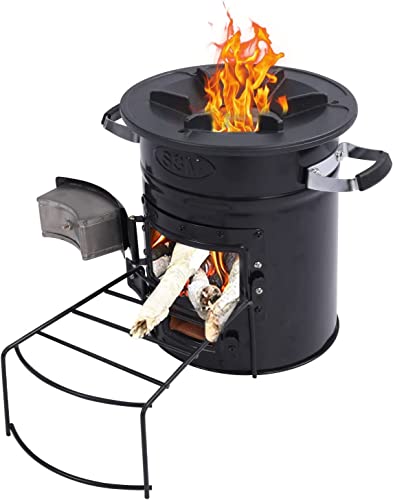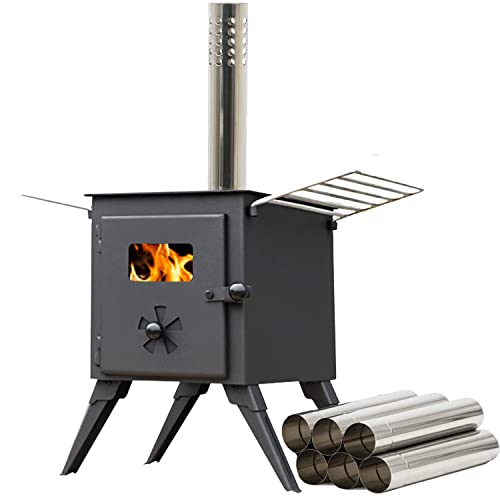The 10 Scariest Things About Stove Wood Burning
페이지 정보

본문
 How to Properly Start a Wood Burning Stove
How to Properly Start a Wood Burning StoveWood outdoor woodburning stoves can be an excellent method to reduce energy consumption and heat rooms. They do require some maintenance.
 A majority of modern wood stoves comply with EPA emission guidelines. You can look for an EPA sticker on the grate or beneath it to ensure your stove doesn't release harmful pollutants.
A majority of modern wood stoves comply with EPA emission guidelines. You can look for an EPA sticker on the grate or beneath it to ensure your stove doesn't release harmful pollutants.How to Start a Wood Fire
The smell and sound of a fire can be an enjoyable addition to any home. It's crucial to learn how to properly make a fire on your stove. Incorrect techniques can lead to the fire not burning effectively and produces creosote or smoke. These tips can help you create a fire that is safe and can heat your home quickly and efficiently.
Before you start a fire, you should check the condition of your logs and coals. If they are too wet they will choke the fire and prevent it from burning properly. You may also want to open the flue to let any ash that has been deposited into the stove wood burning.
Begin by putting a few small modern wood stoves, dry newspaper pieces in the stove. This will help ignite the tinder and kindling. Once they start to ignite, add a layer of larger pieces to the top of the pile. This should be done with an arc pattern so that there is air between each piece.
If you have a wood stove that has an automatic combustion control that will automatically deliver an air stream that is controlled to the fire as it builds. This will allow the fire to burn for a long time without you having to open the stove's door often to keep it in check.
It is important to not use too much tinder, since this could result in an unburned fire that burns at an excessive rate and doesn't make use of the fuel as efficiently as it can. When you have a good fire and a bed of tinder in your stove, you can start the main fire by laying two large base logs on the grate. On the top of these base woods lay a layer parallel to them. This method of building the fire is known as a "top-down" fire will result in an effective and long-lasting fire that will not engulf the larger base logs.
When your fire is established Close the damper and ensure it stays closed. Doing this too soon could cause the fire to smother and will not allow for proper airflow, which will lower the effectiveness of the fire.
Adding Wood
Stoves can be used to heat your home efficiently and help you save money. They can be utilized in conjunction with a central heating system or furnace to provide supplemental heat in large houses. A lot of the stoves that are clean burning available use advanced combustion technology that separates the burning volatile compounds from combustible gases and tar. This is accomplished by supplying air at two different stages. The first stage allows for the combustion of volatile compounds, while the second step offers fresh air that is pre-heated. This improves the combustion process and helps to reduce odors.
The amount of heat that you can get from a stove is contingent upon the species and the moisture content of the wood, and also the size of logs. The logs should be stored in a well-ventilated area for a period of time before you try to burn them, to give the wood time to dry. If the logs are too wet, they will produce lots of steam, which is basically wasted energy.
During the burning of the fire, it is recommended to add more wood to the stack at intervals, not all at once. In addition, adding too much wood at once causes the temperature inside the firebox to rise, and produces a vortex that sucks smoke and volatile compounds that have not been burned back into the flame which could reduce the efficiency of your stove.
Avoid using other combustibles in your stove, like paper or cardboard because they are not wood. They have different physical properties and cannot be burned without causing dangerously high temperatures. It is not recommended to burn combustibles that are compressed, such as wood briquettes as they differ in physical and chemical composition from firewood. They are also not approved by the type to be used in wood burning stoves.
If you're installing a wood burning stove in your home, it's essential to have it installed and tested by a professional. A certified WETT technician will test the stove for safe operation and safety, and also ensure that your chimney is working properly. These professionals offer maintenance services for your chimney and stove to ensure they remain in top shape. They can look for leaks in the areas accessible to your chimney, and fix any issues they spot. They will also make sure that all occupants of the house are aware of and follow the fire evacuation procedure in the event of an accident.
Adjusting the Damper
A damper controls how much heat is lost up the chimney when you're not using your stove. It can also be used to control the flame. If the flue opens but the damper is too closed the fire will not ignite properly and smoke will billow into your home. To get the best fire with the damper properly adjusted, you have to test different settings and observe how each one affects the flames.
You should keep your damper open to let air be able to enter and exit the flue when a flame is burning. This will allow the fire to start and remain lit for a number of hours. The proper opening will stop the fire from being deprived of air and keep it from blowing smoke.
To be able to adjust your damper, you need to first ensure that the fireplace is preheated and the wood stove is hot. This will ensure the chimney is warm, and also that it has a strong draft. After this, the wood stove damper can be adjusted.
Once the fire has burned a bit you should shut the damper down to about three-quarters of its maximum. This will stop warm air from the room from venturing into the chimney, while still allowing smoke to escape.
This is the best method to keep your fire lit and to prevent it from becoming too hot. If you close the damper too far it may stop the draft from working, but if it is too open, a cold wind could enter your home.
You can check to see how much the damper is open by placing your hands near the top of the of the flue pipe. If you feel a small breeze pushing against your hand The damper is most likely to be open.
The damper settings can differ a little from one stove to the next, and even between different types of wood. You can play around with different settings to get an idea of the most suitable setting for your stove.
Clean Up
After an incident, it is essential to clean the stove and flue. This will lower the risk of a chimney fire which is the most common reason for wood burner fireplace ideas stove fires in homes. Creosote is a sticky substance that forms on the stovepipe's interior and is extremely dangerous. It is caused by the moisture and wood particles that are not burned that are unable to escape from the fire. This can also occur when fires are not lit properly.
Regular cleaning helps stop the buildup of creosote. The best woodburning stove way to do this is to sweep the chimney every year. It is also recommended that you have your fireplace and stove professionally cleaned and checked at least every year.
It is also a good idea to clean out the Ash tray and grate frequently. It is best to burn only seasoned wood since it will create less creosote. Avoid burning paper, cardboard and plastic. They could release harmful chemicals for respiratory illnesses and the atmosphere, which may be released into your home.
The glass in the wood burning stove has to be cleaned regularly too. Most newer wood stoves have self-cleaning windows, which means they do not require as much scrubs. You can use stove glass cleaners on the window if you're getting the glass as clean as you want on your wood stove.
Other tips to keep your wood burner stoves uk stove in good condition include lowering the vent when you're not using it, and slamming doors or windows to improve airflow. This will keep the fire burning hotter, and more efficient. The wood stove won't have to be as active to circulate air. It is also a good idea not stack logs or leave them in the flame for long periods of time, as this can lead to splitting and warping. Finally, it is a good idea to avoid using compressed combustible wood logs in your wood stove as the paraffin they contain can melt and flow into the flue which could cause damage to the stove.
- 이전글So , You've Bought Replacement Key For Skoda Fabia ... Now What? 24.11.01
- 다음글16 Must-Follow Facebook Pages For Door Hinges Repair Marketers 24.11.01
댓글목록
등록된 댓글이 없습니다.


